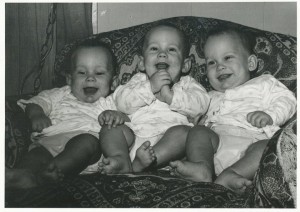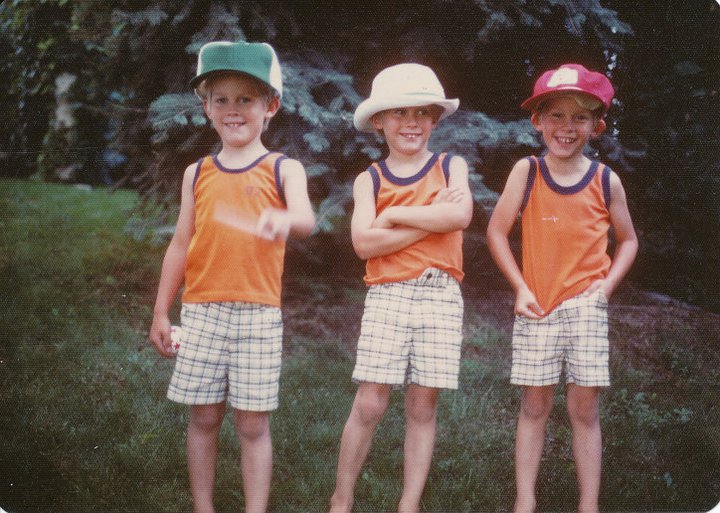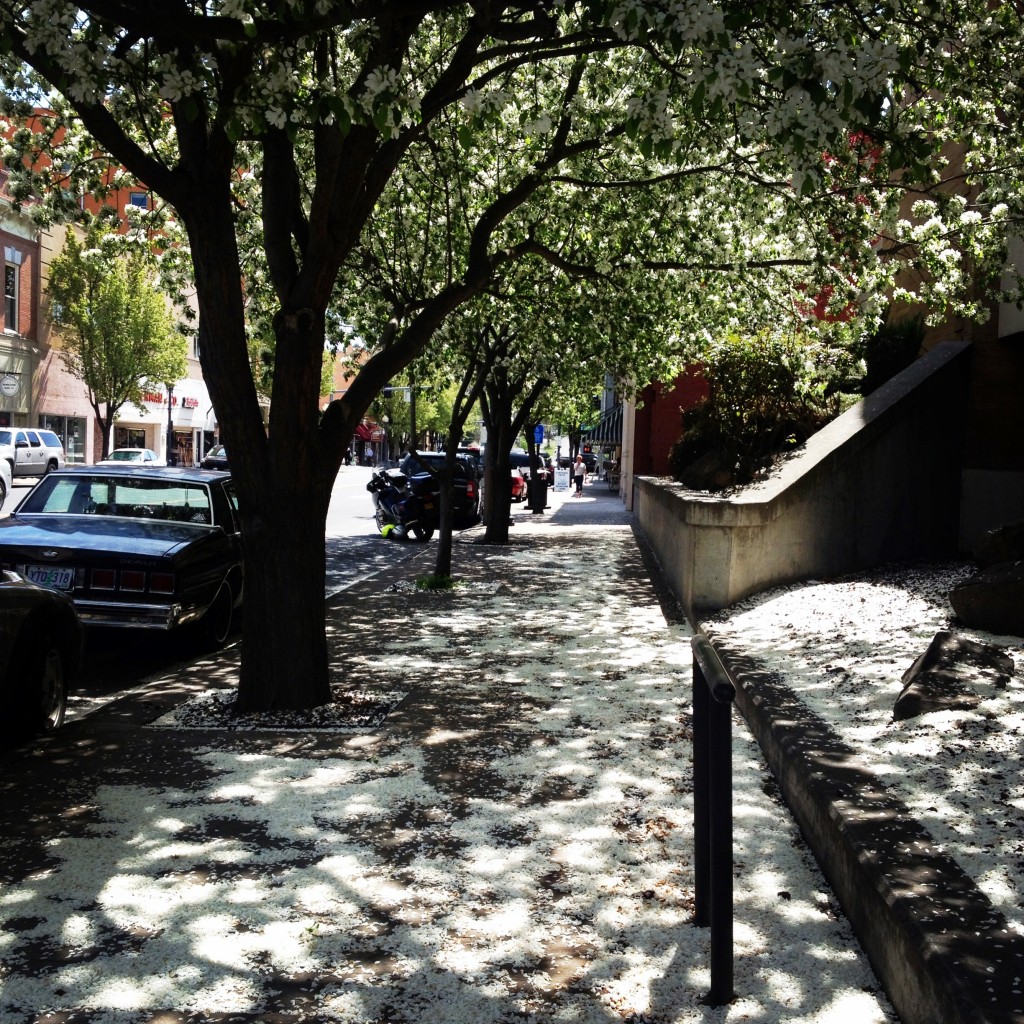The Gardener
Nobody drives fast by her house. Everyone slows down to gawk. Some even park their cars and walk up the brick paver-pathway to the big house with the wide plank-porch, in search of The Gardener.
“How do you do it?” they gush. “Get these flowers to grow so beautifully, here in this desert land?”
The soil in these parts is mostly grey sand. Troubling because the wind blows fierce up the Columbia Gorge. Locals say it’s the rain that brings the wind. Maybe so, but to the novice gardener, unfamiliar with coaxing purple foxgloves or coral impatients into garbs of glory, the sandy soil can be a loathsome reminder of that childhood lyric:
The foolish man built his house upon the sand
The foolish man built his house upon the sand
The foolish man built his house upon the sand
And the rain came tumbling down
 The song is a cautionary tale, a warning if you will. Take care to invest your life in worthy pursuits. Dig deeper, plant thoughtfully, fertilize often, and tend daily. It’s advice that has served The Gardener well.
The song is a cautionary tale, a warning if you will. Take care to invest your life in worthy pursuits. Dig deeper, plant thoughtfully, fertilize often, and tend daily. It’s advice that has served The Gardener well.
There isn’t one inch of vacant soil in the four-foot deep beds that wrap the columned porch like a colorful petticoat, the sort that Dolly Parton might wear. Red geraniums, pink cosmos, white daisies, golden lilies, coral impatients, orange snaps and emerald box shrubs, all nuzzle up to each other gracefully, like sorority sisters posing for homecoming photos. Each stunning in their own right.
On this day in early August, The Gardener sits in an upright chair in the corner of the formal living room, next to a cold fireplace. Behind her, the built-in bookshelf is lined with books and framed family photographs.
Her brunette hair is stylishly cut so that just a smidge of grey appears at the temples. She’s dressed in black pants, a short-sleeve black cotton tee and flip-flops. Her toenails are painted the same burgundy red as the lipstick she’s expertly applied. The Gardener does not leave the house without her make-up on, ever.
Flowers aren’t the only thing she’s tended carefully, purposefully. She is the mother of six – three of whom arrived all on the same day. A set of identical triplet boys. Her middle children – those triplets — are book-ended by an older sister and brother and a younger sister. It doesn’t seem possible but the triplets are 37 now, with families of their own. The growing seasons of our children’s lives are so very short, but The Gardener? She has a mind for the details. All of her life, it seems, she’s paid attention.
##
She was only seven when her parents moved the family to Cloverdale, California. “It was the perfect place to grow up,” she says. “We lived in a novel, we really did. It was an old immigrant town, full of dust bowl people, legends and haunted houses. We even had our very own river – the Russian river. I still dream about that town.”
Her daddy worked at the mill, eventually earning the title of mill wainwright. Her mama stayed home and cared for her and her two younger brothers. Those were the days when kids hopped on their horses instead of bikes.
“We would ride our horses up in the hills.”
Those hills surround some of the nation’s best wine country – Sonoma county. The horse belonged to Nick, the Russian immigrant who built her parents’ house.
“Nick was a bit of a rounder. He had no idea that my dad was going in behind him, inspecting everything he did. Nick had taken the insulation out of the bags and just used the bags as insulation. When my dad found out, you could hear him screaming all over town.”
And that’s how The Gardener got her very own horse. Not a pony, she’d had one of them, but a for-real horse.
“Nick bought horses. They were like odds and ends to him, a way to get a deal. One day he snuck his mare in to breed with this expensive Palomino stallion that somebody else owned. He told the owners that the fence was broke. Well, he’d broke it so he could breed his mare for free.”
The foal birthed from that union was a red-headed reject. The Gardener named her Dawn.
“She wasn’t a beauty but she could jump pretty good. I had a lot of different friends. Some I’d ride with. Some I’d do paper dolls with. Some I’d do puzzles with. Some I’d sit by the highway with and look for movie stars passing by. We were always sure we’d see them.”
Before techno-gadgets became all the rage, children had imaginations to keep them entertained. “We would get a group of kids together and make a game of the day. We’d pile huge rocks together and call it a castle. We’d collect skeletons from cows and sheep that had died, and that was our “treasure”. We’d take the teeth out of the skeleton and make necklaces from them. We’d spread the limbs around and that would be our dungeon. Sometimes we’d ride out to the tullies and make forts out ofthe old chicken houses.”
Just like Scout in TO KILL A MOCKINGBIRD, The Gardener grew up among characters. There was Miz King whose sheep were all the time getting out and heading up to the cemetery. There was old Anna Kornstrom who would mix berries, thickened with cornstarch, for an afternoon treat, and there were those creepy stories of long-dead Madam Emily Preston.
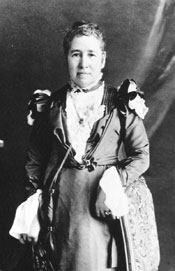 Madam Preston was known throughout California and the Pacific Northwest as a faith-healer. She claimed to have visions of heaven and hell and to be able to seethe words of God written on the walls. She could look at a person and sum up what treatment they would need. She concocted potions that she sold through a robust mail-order enterprise.
Madam Preston was known throughout California and the Pacific Northwest as a faith-healer. She claimed to have visions of heaven and hell and to be able to seethe words of God written on the walls. She could look at a person and sum up what treatment they would need. She concocted potions that she sold through a robust mail-order enterprise.
The community of Preston, about two miles from Cloverdale, grew up as a result of people seeking treatment from her. One of her most popular potions was a blistering agent. A commonly-held belief was that you could draw poison out of the body by blistering the skin. The people she treated often had oozing sores, a far less palatable treatment than the tasty wine cordials she also recommended.
The faith-healer’s reputation continued long after her death in 1909. The Gardener heard that when Madam Preston’s tomb was opened, long after her death, her body hadn’t rotted on nary bit. It was as intact as it had been on the day she died.The Gardener has been a life-long Lutheran, herself. A Lutheran with an unbridled imagination. Wouldn’t Garrison Kellior be pleased?
Jimmy Oster was one of The Gardeners best childhood buddies. The Osters bought Madam Preston’s rambling home and land. Rumor, or perhaps just runaway imaginations, claimed there was a mine on that property. The Gardener and Jimmy would mount their horses and ride all over the place in search of real treasure.
“The trails led us clear up in the hills. We came out of the trees and brush and you could see all these golden grasses, a little lake, and an ancient broken down windmill. Across from that lake a big dark forest of something, I didn’t know what, started. We were so focused on exploring, I can barely remember Jimmy’s family. I just remember those magical rides we used to take.”
The entire community of Cloverdale seemed rooted in some sort of magic or another. Or maybe The Gardener just remembers it that way. The town witch, lived right next door to Dime Store lady. The two women had little use for one another. The Dime Story lady claimed that the reason the Witch’s garden flourished better than her own was because it was watered with blood.
The Town Witch was really a young widowed woman, with an affinity for Victorian-era gowns and hats. After her second-husband died – reportedly from a self-inflicted gun-shot wound – she became the town’s mortician. The Gardener and friend would climb up the tree neighboring the Witch’s house and peer into the windows. “In our minds we could see the gun he used laying on the bedside table. It was six-shooter. I don’t know if we really saw it or not but we convinced ourselves we did and, you know for a kid, that was fun.”
Kid bits. That’s what The Gardener calls the town gossip they would overhear as their parents sat around their tables drinking black coffee or over Sunday afternoon dinners of fried chicken and mashed potatoes.
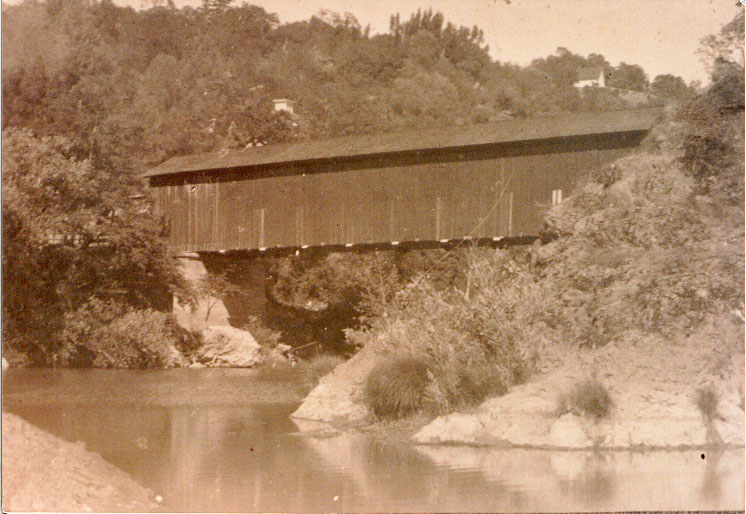 Everybody was intrigued with the neighbor building the giant yacht in his backyard. A regular modern-day Noah, that one. Or a certified California nut case.
Everybody was intrigued with the neighbor building the giant yacht in his backyard. A regular modern-day Noah, that one. Or a certified California nut case.
Oh!Wait! You can’t forget that Lillian lady. She owned her own property outright, had her own hacienda, Cartwright style, and long dark hair way past her bum. But what really struck the town’s people is the way she always dressed in baggy guy jeans and tennis shoes. A quirky beauty that one. Strange but in a mysterious way. For a girl like The Gardener there simply wasn’t a better place to grow up, than among all these people of texture and personality.
God’s very own garden of humanity.
It broke her heart when the mill was bought out and her daddy along with so many others were sent packing. “It was like dying. You think you will die but you don’t. I just kept thinking we won’t move, we won’t move. But we did.”
Her daddy moved them back to Washington State. He bought 22 acres of farm land near Port Angeles, in the foothills of the Olympic Mountains. She stayed there until heading off to college, where she met the cousin who would become her husband.
#
Like her mother before her, The Gardener eloped.
Her mother had eloped when she was 17 and her daddy 21. Her parents had run off because her mother’s mama hated her daddy.
“My dad was from the wrong side of the tracks but a tremendous athlete. My mom was a house flower, very well raised.”
The two met a dance. Her date, who needed a match, asked the Gideon boy if he could borrow one. “If you let me dance with your girl,” that Gideon boy reportedly replied.
What a match that turned out to be.
The Gideon boy didn’t have much of a life prior to that night, with the exception of sports. A teacher, Art Lind, had spotted that Gideon fellow and recognized that he was agile, and quick. Art Lind steered that Gideon boy to track, a legacy that would be passed along to coming generations.
And years later, that Gideon boy’s daughter eloped with Art Lind’s son, her very own cousin.
“His grandma and my great-grandma are sisters,” she says plainly, as if marrying your cousin makes perfectly good sense.
The Gardner slips off her flip-flops, run her feet back and forth across the pile of the oriental rug. Ask a question and she answers in a story, rarely pausing because the telling of one thing leads to the remembering of another. Her husband-cousin comes into the room where jade plants grow in gold pots, bringing photos of family members, sharing remembrances of his own. His gray hair is thick, his gait runner strong still. He makes Harrison Ford look like a has-been.
She’d started college at Pacific Lutheran but switched over to Central Washington University, where that Lind cousin was attending. The first time they met, it wasn’t her sweet Christian spirit he noticed. “It was my big bazooms,” she says laughing. “My sweater was tucked in, and I had these big bazooms. I’ve been noticed a lot.”
She thought he was the most beautiful man she’d ever seen, but what she really liked about him was that he never tried to show off. He was just a humble guy. After that night, outside the library, when they kissed for the first time, and her knees went out from under her, well, gosh, that had never happened before, not with any other boy and she had dated a ton of them.
They eloped over spring break.
#
There’s this convoluted ancestor story about a grandfather’s aunt who had triplets but they all died at birth. When that aunt ended up pregnant after that, perhaps by a man who wasn’t her husband, she killed the babe and buried it in the barn. The police found out and she was sent to prison.
From that moment on, every generation carried the burden of all those dead babies –bad blood in that clan. Everybody said it so it must be true.
#
Babies came quickly for The Gardener and her cousin. First a girl then a boy. He got a job teaching and coaching at a small town on the Oregon coast. She stayed home, took care of the garden and cared for those babies. When their daughter was 12 and the boy was 9, she turned up pregnant – with triplets.
Was it an omen of bad things to come? Or would these children restore the family honor? Redeem the bad blood?
They’d both grown up in the Lutheran faith, going to church, getting confirmed, her father had helped built the Lutheran church back in Cloverdale. There were deacons and elders on both sides. But her own faith has been something she’s struggled with, struggles with still.
“At times I’ve had faith, but I don’t know how God works. It seems like I can’t keep it all the time. What precipitates it for me is when there are difficult or hard times. I guess you rely more on God then.”
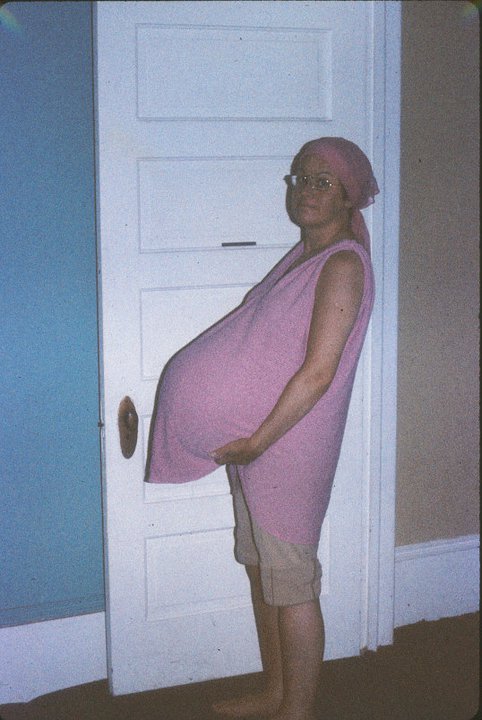 The doctor had thought her unusually large so early in her pregnancy. He kept listening for a second heartbeat but could never make it out. Not until she was seven months pregnant. Then he heard it, and ordered an x-ray just to be sure, the standard means of determining such things back before MRIs. That’s when she learned that she was going to be giving birth to not one, not two, but three babies. Oh. Dear. Lord.
The doctor had thought her unusually large so early in her pregnancy. He kept listening for a second heartbeat but could never make it out. Not until she was seven months pregnant. Then he heard it, and ordered an x-ray just to be sure, the standard means of determining such things back before MRIs. That’s when she learned that she was going to be giving birth to not one, not two, but three babies. Oh. Dear. Lord.
“When those three heads appeared like little light blubs my husband about passed out. We got a milkshake after that appointment and sat in the care looking at each other and laughing.”
But later, when the reality of three babies set it, so did the fear.
“When I was pregnant with the boys, I felt trapped in my own body, so I had to go inward, and contemplate.”
The thing that weighed so heavy within her was that old family curse, the one inflicted by that great aunt from so long ago: What if the babies died? Or what if she died? Where would that leave her older children? Her adoring husband?
“I had this feeling of panic come over me. How am I going to do this?”
But as quickly as the panic rose up so did an answer – not audible, of course – she’s Lutheran, remember. Rather that nagging Norwegian-God voice that said, “Count your blessings.”
“Count your blessings. Everything from your fingernails to your toes to the car you drive to the eyes you see with.”
So she did exactly as that voice instructed. She began to praise God, to thank him for Every. Single. Little. Thing. And right away she noticed that she became calmer.
“I felt like this was a time for me to focus on people in need. Instead of 24 hours, I felt like I had extra hours in my day.”
Hours of not anxiously, but eagerly anticipating the birth that would follow. And like Mary her heart was filled to spilling, Praise burst wild from within, like Black-Eyed Susans along the roadside.
“I spent a lot of time praying and thinking. Every day I would tell myself, I can do this. Everytime I made it through another day I told myself they were gaining an ounce.”
She came within six days of her due date. The babes, identical triplet boys, weighed in at slightly over 21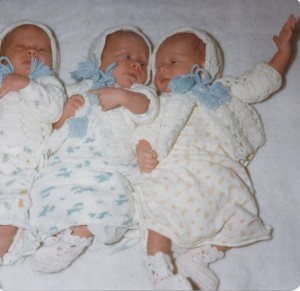 pounds total. She had long known that they would be boys because of that dream she’d had of three blue irises. And that small coastal community? They wrapped a blanket of protective wool around the tender family and vowed to care for them, always.
pounds total. She had long known that they would be boys because of that dream she’d had of three blue irises. And that small coastal community? They wrapped a blanket of protective wool around the tender family and vowed to care for them, always.
#
They eventually moved inland, far from the beach but never from the water.The boys are teachers themselves now. And that younger sister, born when the triplets were pre-schoolers, is married to a teacher, too. So is the older boy.
And that family curse about bad blood?
Nobody but the family knows it now.
Whatever curse the family may or may not have had, has long since been redeemed. Ask anyone around town about The Gardener and her brood and the term that comes up most often is honorable. Such honorable, hard-working, God-loving bunch.
But ask The Gardener how she managed to raise up six kids, all of whom love and honor the Lord, and she shrugs her shoulders, unsure, and feeling oh so unworthy.
“I always felt us having those triplets, righted that old nasty story. Our triplets lived and things were good. It’s a lot of work raising kids. You let them go but they are still my babies. You want them to be kind to others, to have a good work ethic. So for who you are you do as good as you can, but I don’t know that it was us. We tried to do the best we could do. They understood from early on that our family was a team.”
They look about them now, The Gardener and her husband, and they are so very aware of their treasures. “Everybody is so good-looking and smart and talented and kind.”
But, then again, they’ve felt that way even way back when, as they stood at the foot of those three cribs, the afternoon sun pouring in the window, and marveling, “How can our lives get any richer than this?”
Gratitude is the best fertilizer for the soul.
Just ask The Gardener. She’ll tell you all about it.
####


